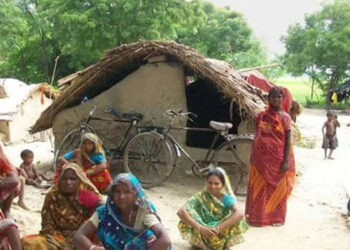![]() Follow Us on Google News
Follow Us on Google News
Child poverty in the United States more than doubled and median household income declined last year when coronavirus pandemic-era government benefits expired and inflation kept rising, according to U.S. Census Bureau data released Tuesday.
Just a year ago, the Census Bureau found child poverty had hit a historic low. Experts point to the expanded child tax credit as key to this poverty yo-yo. Adam Ruben of the Economic Security Project says the tax credit went to more people, in larger amounts, and was paid out monthly.
At the same time, the official poverty rate for Black Americans dropped to its lowest level on record and income inequality declined for the first time since 2007 when looking at pre-tax income. However, income inequality increased when using after-tax income, another result of the end of pandemic-era tax credits, according to Census Bureau reports on income, poverty and health insurance.
The reports reflected the sometimes-conflicting factors last year buffeting U.S. households, which faced a robust jobs market, with the number of full-time workers increasing year-over-year, but also rising inflation and the end of pandemic-era stimulus benefits.
In response to the COVID-19 pandemic, the federal government expanded the child tax credit and sent payments to people who had suffered from the pandemic, lowering poverty measures in 2021. The expansion of the child tax credit expired at the end of 2021, and other pandemic-related benefits have expired within the past year.
As a result, the supplemental poverty measure rate for children jumped 7.2 percentage points to 12.4% in 2022, according to the Census Bureau.
The median household income in 2022 was $74,580, a decline of 2.3% from 2021. Asian Americans had the highest median household income, at almost $109,000, while Black Americans had the lowest, at about $53,000.
The official poverty rate was 11.5%, and for Black Americans it was 17.1%, the lowest on record. The supplemental poverty measure was 12.4%, an increase of 4.6 percentage points from 2021.




































